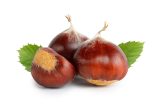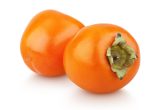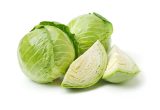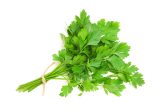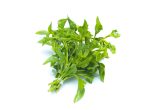Walnut

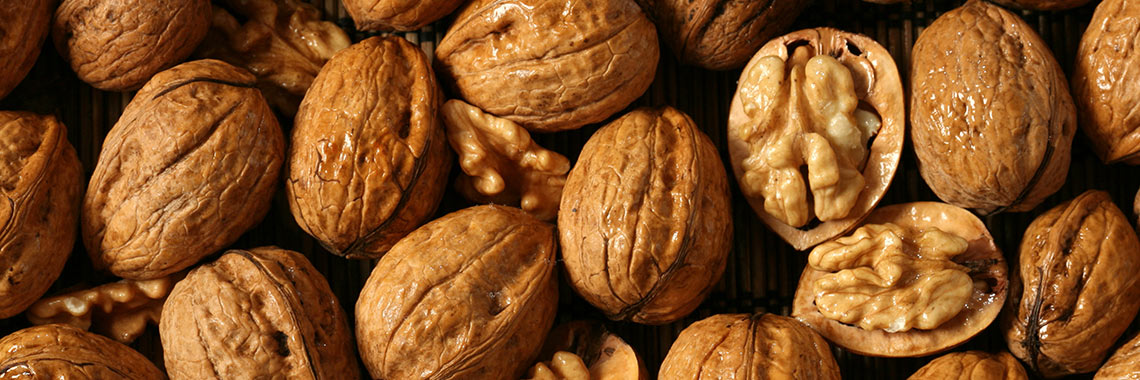
Description
- The walnut tree (Juglans regia) belongs to the Juglandaceae family.
- Walnut is an important component in the Mediterranean diet (Gasch-Ferré, 2013).
PHYSICAL AND ORGANOLEPTIC CHARACTERISTICS
- Seven cultivars of black walnut: Brown nugget, Davidson, Emma K, Football, Sparks 127, Sparrow and Tomboy, were subjected to sensory analysis by seven trained panellists.
- The Emma K cultivar seems to have a less pronounced taste compared to the other cultivars, which have been described as nutty, nutty-seedy, nutty-buttery, fruity, flowery, oily and, overall, sweet. The Emma K cultivar had a taste, according to the panel, of burnt, black fruit, as well as being earthy, musty, rancid, pungent and bitter (Miller, 2013).
- The sensory profile of the walnut is influenced by its degree of ripeness (Amin, 2017).
COMPOSITION CHARACTERISTICS (excluding macronutrients, vitamins and minerals)
- Rich in mono and polyunsaturated fatty acids, proteins, fibres, vitamins E and K, minerals (magnesium, potassium, selenium), carotenoids and phytosterols, walnut has antioxidant properties. Its consumption is frequently associated with a decrease in risk factors for chronic diseases (de Souza, 2017).
- In particular, regular walnut consumption is thought to have beneficial effects on obesity, hypertension, diabetes and cardiovascular disease, with a reduction in mediators of chronic diseases, such as oxidative stress, inflammation, visceral adiposity, hyperglyemia, insulin resistance and metabolic syndrome (de Souza, 2017).
- Walnuts also contain polyphenols such as ellagic acid, genistein, resveratrol, and other bioactive compounds such as anacardic acid and inositol phosphate, which may reduce the risk of cancer by inducing apoptosis and inhibiting cell proliferation (Aune, 2016).
- The main polyphenol in walnuts is pedunculagin: an ellagitannin. The latter has well known antioxidant and anti-inflammatory bioactivity and a potential role in preventing the development and progression of certain diseases, including cancer, cardiovascular and neurodegenerative diseases (Sánchez-González, 2017).
- Walnuts also contain another polyphenol, catechin, which is beneficial in preventing cardiovascular disease (Vinson, 2012).
DRIED
The following values are approximate and depend on variety, season, ripeness, cultivation conditions, etc. Dried walnuts (in kernels) provide an average of 700 kcal per 100 g, i.e. 2890 kJ. One portion of dried walnuts weighs an average of 30 g, which represents an energy intake of 210 calories (kcal) approximately.
COMPOSITION TABLES
For each nutrient, the tables provide information on the content, minimum and maximum values for 100 g net of dried walnuts, kernels, while the percentage of Dietary Reference Values (DRVs) is calculated for a portion of 30 g.
MACRONUTRIENTS
| Constituent (g) |
Average content
per 100g |
Min-Max per 100g |
Average content
per 30g |
DRV% * |
|---|---|---|---|---|
| Water | 4 | 3,46 - 4,51 | 1,20 | - |
| Fibers | 6,70 | 4,70 - 9,20 | 2,01 | - |
| Carbohydrates | 6,88 | - | 2,06 | 0,79 |
| Sugars | 3 | 2,61 - 3,40 | 0,90 | 1 |
| Lipids | 67,30 | 63,50 - 70,20 | 20,19 | 28,84 |
| Saturated fat | 6,45 | 6,13 - 6,51 | 1,94 | 9,68 |
| Protein | 15,70 | 12,20 - 18,90 | 4,71 | 9,42 |
| Constituent (g) | Amount | Min-Max | DRV% |
|---|---|---|---|
| Water | Ciqual 2020 | - | - |
| Fibers | Ciqual 2020 | - | - |
| Carbohydrates | Ciqual 2020 | - | Règlement (UE) N°1169/2011 du parlement Européen et du conseil du 25 octobre 2011 |
| Sugars | Ciqual 2020 | - | Règlement (UE) N°1169/2011 du parlement Européen et du conseil du 25 octobre 2011 |
| Lipids | Ciqual 2020 | - | Règlement (UE) N°1169/2011 du parlement Européen et du conseil du 25 octobre 2011 |
| Saturated fat | Ciqual 2020 | - | Règlement (UE) N°1169/2011 du parlement Européen et du conseil du 25 octobre 2011 |
| Protein | Ciqual 2020 | - | Règlement (UE) N°1169/2011 du parlement Européen et du conseil du 25 octobre 2011 |
Zoom on carbohydrates
- For a 30 g serving, the walnut’s carbohydrate content is 2.06 g.
- This amount corresponds to 6.88 g per 100 g and is lower than the average carbohydrate content of nuts (18.13 g per 100 g).
- Walnuts are low in sugar* (3 g per 100 g) as they contain no more than 5 g per 100 g.
Zoom on fibres
- This amount is lower than the average quantity of fibre in nuts (9.32 g per 100 g).
- For a 30 g portion, walnuts provide 2.01 g of fibre.
Zoom on proteins
- Their protein content is 4.71 g per 30 g serving.
- The amount of protein in 100 g of walnuts (15.70 g) is slightly lower than the average quantity found in nuts (16.73 g per 100 g).
Zoom on lipids
- Walnuts provide mainly fats, at 67.30 g per 100 g, which is higher than the average fat content in nuts (41.27 g per 100 g).
- Their composition is of interest from a nutritional point of view, since they contain polyunsaturated fatty acids, mainly linoleic acid (36.10 g per 100 g) and alpha-linolenic acid (7.50 g per 100 g), and monounsaturated fatty acids including oleic acid (13.40 g per 100 g).
- Hazelnuts contain 20.19 g of fat in a 30 g serving.
*Regulation (EC) No 1924/2006 of the European Parliament and of the Council of 20 December 2006 on nutrition and health claims made on foods.
MINERALS AND TRACE ELEMENTS
| Constituent |
Average content
per 100g |
Min-Max per 100g |
Average content
per 30g |
DRV% * |
|---|---|---|---|---|
| Calcium (mg) | 75 | NC - 110 | 22,50 | 2,81 |
| Chloride (mg) | - | - | - | - |
| Copper (mg) | 1,10 | NC - 1,70 | 0,33 | 33 |
| Iron (mg) | 2,20 | NC - 3,20 | 0,66 | 4,71 |
| Iodine (µg) | < 20 | - | 6 | - |
| Magnesium (mg) | 140 | 124 - 164 | 42 | 11,20 |
| Manganese (mg) | 2,90 | NC - 3,90 | 0,87 | 43,50 |
| Phosphorus (mg) | 360 | 340 - NC | 108 | 15,43 |
| Potassium (mg) | 430 | 415 - 470 | 129 | 6,45 |
| Selenium (µg) | < 20 | - | 6 | - |
| Sodium (mg) | < 5 | 0 - 12,30 | 1,50 | - |
| Zinc (mg) | 2,70 | NC - 3,40 | 0,81 | 8,10 |
| Constituent | Amount | Min-Max | DRV% |
|---|---|---|---|
| Calcium (mg) | Ciqual 2020 | - | Règlement (UE) N°1169/2011 du parlement Européen et du conseil du 25 octobre 2011 |
| Chloride (mg) | Ciqual 2020 | - | Règlement (UE) N°1169/2011 du parlement Européen et du conseil du 25 octobre 2011 |
| Copper (mg) | Ciqual 2020 | - | Règlement (UE) N°1169/2011 du parlement Européen et du conseil du 25 octobre 2011 |
| Iron (mg) | Ciqual 2020 | - | Règlement (UE) N°1169/2011 du parlement Européen et du conseil du 25 octobre 2011 |
| Iodine (µg) | Ciqual 2020 | - | Règlement (UE) N°1169/2011 du parlement Européen et du conseil du 25 octobre 2011 |
| Magnesium (mg) | Ciqual 2020 | - | Règlement (UE) N°1169/2011 du parlement Européen et du conseil du 25 octobre 2011 |
| Manganese (mg) | Ciqual 2020 | - | Règlement (UE) N°1169/2011 du parlement Européen et du conseil du 25 octobre 2011 |
| Phosphorus (mg) | Ciqual 2020 | - | Règlement (UE) N°1169/2011 du parlement Européen et du conseil du 25 octobre 2011 |
| Potassium (mg) | Ciqual 2020 | - | Règlement (UE) N°1169/2011 du parlement Européen et du conseil du 25 octobre 2011 |
| Selenium (µg) | Ciqual 2020 | - | Règlement (UE) N°1169/2011 du parlement Européen et du conseil du 25 octobre 2011 |
| Sodium (mg) | Ciqual 2020 | - | - |
| Zinc (mg) | Ciqual 2020 | - | Règlement (UE) N°1169/2011 du parlement Européen et du conseil du 25 octobre 2011 |
Zoom on minerals and trace elements
- Walnuts are high in:
- manganese as they provide the equivalent of 43.50% of DRVs, i.e. 0.87 mg for a 30 g portion;
- copper as they provide the equivalent of 33% of DRVs, i.e. 0.33 mg for a 30 g portion.
- They are a source of phosphorus as they provide the equivalent of 15.43% of DRVs, i.e. 108 mg for a 30 g portion.
- Walnuts contain a significant amount of magnesium as they provide the equivalent of 11.20% of DRVs, i.e. 42 mg for a 30 g portion.
- The other minerals and trace elements are present in smaller quantities in walnuts, covering less than 9% of DRVs for a 30 g serving.
VITAMINS
| Constituent |
Average content
per 100g |
Min-Max per 100g |
Average content
per 30g |
DRV% * |
|---|---|---|---|---|
| Provitamin A Beta-carotene (µg) | - | 0 - 46 | - | - |
| Vitamin A equivalent (µg) | 3,45 | 0 - 7,67 | 1,04 | 0,13 |
| Vitamin B1 (mg) | 0,30 | NC - 0,39 | 0,09 | 8,18 |
| Vitamin B2 (mg) | 0,05 | NC - 0,16 | 0,02 | 1,07 |
| Vitamin B3 (mg) | 0,40 | NC - 1,44 | 0,12 | 0,75 |
| Vitamin B5 (mg) | 0,67 | 0,54 - NC | 0,20 | 3,35 |
| Vitamin B6 (mg) | 0,19 | NC - 0,59 | 0,06 | 4,07 |
| Vitamin B9 (µg) | 120 | 81 - NC | 36 | 18 |
| Vitamin C (mg) | 0,77 | NC - 2 | 0,23 | 0,29 |
| Vitamin E (mg) | 1,67 | 0,14 - NC | 0,50 | 4,18 |
| Vitamin K1 (µg) | 2,40 | 1 - 4,60 | 0,72 | 0,96 |
| Constituent | Amount | Min-Max | DRV% |
|---|---|---|---|
| Provitamin A Beta-carotene (µg) | Ciqual 2020 | - | - |
| Vitamin A equivalent (µg) | Calcul à partir de la valeur Provitamine A Béta-carotène* | - | Règlement (UE) N°1169/2011 du parlement Européen et du conseil du 25 octobre 2011 |
| Vitamin B1 (mg) | Ciqual 2020 | - | Règlement (UE) N°1169/2011 du parlement Européen et du conseil du 25 octobre 2011 |
| Vitamin B2 (mg) | Ciqual 2020 | - | Règlement (UE) N°1169/2011 du parlement Européen et du conseil du 25 octobre 2011 |
| Vitamin B3 (mg) | Ciqual 2020 | - | Règlement (UE) N°1169/2011 du parlement Européen et du conseil du 25 octobre 2011 |
| Vitamin B5 (mg) | Ciqual 2020 | - | Règlement (UE) N°1169/2011 du parlement Européen et du conseil du 25 octobre 2011 |
| Vitamin B6 (mg) | Ciqual 2020 | - | Règlement (UE) N°1169/2011 du parlement Européen et du conseil du 25 octobre 2011 |
| Vitamin B9 (µg) | Ciqual 2020 | - | Règlement (UE) N°1169/2011 du parlement Européen et du conseil du 25 octobre 2011 |
| Vitamin C (mg) | Ciqual 2020 | - | Règlement (UE) N°1169/2011 du parlement Européen et du conseil du 25 octobre 2011 |
| Vitamin E (mg) | Ciqual 2020 | - | Règlement (UE) N°1169/2011 du parlement Européen et du conseil du 25 octobre 2011 |
| Vitamin K1 (µg) | Ciqual 2020 | - | Règlement (UE) N°1169/2011 du parlement Européen et du conseil du 25 octobre 2011 |
Zoom on vitamins
- Walnuts are a
source of vitamin B9 as they provide the equivalent of 18% of DRVs, i.e. 36 µg for a 30 g portion. - The other vitamins are present in smaller quantities, covering less than 9% of DRVs in a 30 g serving.
*Calculation made: Beta Carotene / 6 + retinol
POLYPHENOLS
| Constituent (mg) |
Average content
per 100mg |
Min-Max per 100mg |
Average content
per 30mg |
|---|---|---|---|
| Flavonoids (mg) | - | 0 - 456,50 | - |
| of which Flavonols (mg) | 65,21 | 0 - 456,50 | 19,56 |
| Phenolic Acids (mg) | 449,36 | 400,97 - 497,76 | 134,81 |
| of which Hydroxybenzoic acids (mg) | 449,36 | 400,97 - 497,76 | 134,81 |
| Lignanes (mg) | 0,13 | 0,08 - 0,15 | 0,04 |
| Other Polyphenols (mg) | - | - | - |
| Total polyphenols | 514,7 | 401,05 - 954,41 | 154,41 |
| Constituent (mg) | Amount | Min-Max |
|---|---|---|
| Flavonoids | Phénol-Explorer version 3.6 Méthode utilisée : Chromatographie après hydrolyse | - |
| of which Flavonols | Phénol-Explorer version 3.6 Méthode utilisée : Chromatographie après hydrolyse | - |
| Phenolic Acids | Phénol-Explorer version 3.6 Méthode utilisée : Chromatographie après hydrolyse | - |
| of which Hydroxybenzoic acids | Phénol-Explorer version 3.6 Méthode utilisée : Chromatographie après hydrolyse | - |
| Lignanes | Phénol-Explorer version 3.6 Méthode utilisée : Chromatographie après hydrolyse | - |
| Other Polyphenols | - | - |
| Total polyphenols | Phénol-Explorer version 3.6 Méthode utilisée : Chromatographie après hydrolyse | - |
Zoom on polyphenols
- Polyphenols are substances with an antioxidant effect.
- Hydroxybenzoic acids, being part of phenolic acids, are predominantly present in walnut composites, accounting for 87.31% of total polyphenols identified.
- Next come flavonols (12.67% of total polyphenols).
- Lignans represent only 0.03% of the total polyphenols.
Nutrition and health claims
According to the definitions of nutrition claims as set out in Regulation (EC) No 1924/2006 on nutrition and health claims, and in view of the composition of dried walnut, the following claims may be used:
NUTRITION CLAIMS OF DRIED WALNUT
- Low in sugar (100 g of walnuts contain no more than 5 g of sugars)
- High in manganese (30 g of walnuts provide more than 30% of DRVs)
- High in copper (30 g of walnuts provide more than 30% of DRVs)
- Source of vitamin B9 (30 g of walnuts provide more than 15% of DRVs)
- Source of phosphorus (30 g of walnuts provide more than 15% of DRVs)
HEALTH CLAIMS (for a daily consumption of 30 g of dried walnuts)
Walnuts help improve the elasticity of blood vessels.
HEALTH CLAIMS (for a consumption of 30 g of dried walnuts)
Manganese
- Manganese contributes to:
- normal energy-yielding metabolism,
- maintenance of normal bones,
- normal formation of connective tissues,
- protection of cells from oxidative stress.
Copper
- Copper contributes to:
- maintenance of normal connective tissues,
- normal energy-yielding metabolism,
- normal functioning of the nervous system,
- normal hair pigmentation,
- normal iron transport in the body,
- normal skin pigmentation,
- normal function of the immune system,
- protection of cells from oxidative stress.
Folates or vitamin B9
- Folates contribute to:
- maternal tissue growth during pregnancy,
- normal amino acid synthesis,
- normal blood formation,
- normal homocysteine metabolism,
- normal psychological function,
- normal function of the immune system,
- reduction of tiredness and fatigue.
- Folates have a role in the process of cell division.
Phosphorus
- Phosphorus contributes to:
- normal energy-yielding metabolism,
- normal function of cell membranes,
- maintenance of normal bones,
- maintenance of normal teeth.
References
- Agence nationale de sécurité sanitaire de l’alimentation, de l’environnement et du travail. Table de composition nutritionnelle des aliments Ciqual 2020. Consultée le 24/07/2020 depuis le site internet Ciqual https://ciqual.anses.fr/
- Agence nationale de sécurité sanitaire de l’alimentation, de l’environnement et du travail. Table de composition nutritionnelle des aliments Ciqual pour le calcul des apports nutritionnels CALNUT 2020. Consultée le 22/09/2020 depuis le site internet Ciqual https://ciqual.anses.fr/
- Amin F, Masoodi FA, Baba WN, Khan AA, Ganie BA. Effect of different ripening stages on walnut kernel quality: antioxidant activities, lipid characterization and antibacterial properties. Journal of Food Science and Technology. 2017;54(12): 3791–801.
- Aune D, Keum N, Giovannucci E, Fadnes LT, Boffetta P, Greenwood DC, et al. Nut consumption and risk of cardiovascular disease, total cancer, all-cause and cause-specific mortality: a systematic review and dose-response meta-analysis of prospective studies.BMC Medicine. 2016;14: 207.
- de Souza RGM, Schincaglia RM, Pimentel GD, Mota JF. Nuts and Human Health Outcomes: A Systematic Review. Nutrients. 2017;9(12): 1311.
- Guasch-Ferré M, Bulló M, Martínez-González MÁ, Ros E, Corella D, Estruch R, Fitó M, Arós F, Wärnberg J, Fiol M, Lapetra J, Vinyoles E, Lamuela-Raventós RM, Serra-Majem L, Pintó X, Ruiz-Gutiérrez V, Basora J, Salas-Salvadó J; PREDIMED study group. Frequency of nut consumption and mortality risk in the PREDIMED nutrition intervention trial. BMC Med. 2013 Jul 16;11:164.
- Miller AE, Chambers DH. Descriptive analysis of flavor characteristics for black walnut cultivars. J Food Sci. 2013 Jun;78(6):S887-93.
- Neveu V, Perez-Jiménez J, Vos F, Crespy V, du Chaffaut L, Mennen L, Knox C, Eisner R, Cruz J, Wishart D, Scalbert A. (2010) Phenol-Explorer: an online comprehensive database on polyphenol contents in foods. Database, doi: 10.1093/database/bap024. Full text (free access)
- Règlement (CE) N° 1924/2006 du Parlement européen et du Conseil du 20 décembre 2006 concernant les allégations nutritionnelles et de santé portant sur les denrées alimentaires.
- Règlement (UE) N°432/2012 de la Commission du 16 mai 2012 établissant une liste des allégations de santé autorisées portant sur les denrées alimentaires, autres que celles faisant référence à la réduction du risque de maladie ainsi qu’au développement et à la santé infantiles.
- Règlement (UE) n°1169/2011 du Parlement européen et du Conseil du 25 octobre 2011 concernant l’information des consommateurs sur les denrées alimentaires, modifiant les règlements (CE) n°1924/2006 et (CE) n°1925/2006 du Parlement européen et de Conseil et abrogeant la directive 87/250/CEE de la Commission, la directive 90/496/CEE du Conseil, la directive 1999/10/CE de la Commission, la directive 200/13/CE du Parlement européen et du Conseil, les directives 2002/67/CE et 2008/5/CE de la Commission et le règlement (CE) n°608/2004 de la Commission.
- Sánchez-González C, Ciudad CJ, Noé V, Izquierdo-Pulido M. Health benefits of walnut polyphenols: An exploration beyond their lipid profile. Critical Reviews in Food Science and Nutrition. 2017;57(16): 3373–83.
- Vinson JA, Cai Y. Nuts, especially walnuts, have both antioxidant quantity and efficacy and exhibit significant potential health benefits. Food Funct. 2012;3(2):134-40.




